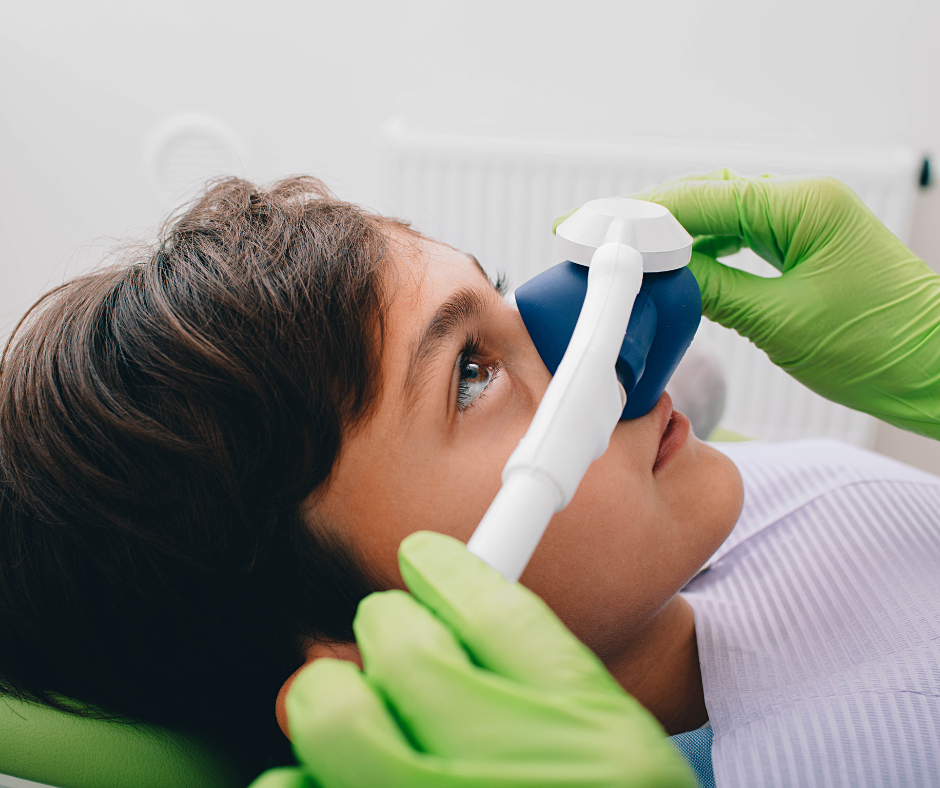At first glance, having your child sedated for a dentist appointment might seem like an extreme measure—especially if they’re only coming in for a routine checkup or cleaning. But for those with severe dental anxiety or some children with special needs, pediatric dental sedation could make a significant difference in their dental care experience.
We know what you’re wondering: Is sedation safe?
Absolutely! And in some circumstances, it can make a trip to the dentist even safer. The last thing any parent, dentist, or hygienist wants is for a child to be at risk of injury during their visit due to an inability to sit still, low pain tolerance, or dentophobia-related panic attacks that may occur.
Opting for sedation can help ease your child’s anxiety and make it easier for the dentist to work quickly, efficiently, and safely.
How to choose the right pediatric anesthesia
There are three main types of dental sedation: nitrous oxide (laughing gas), general anesthesia, and oral conscious sedation. The right choice for your child depends on several different variables, such as the procedure they’re undergoing and their medical history. Being informed on each type of sedation can also help you decide which method to choose.
Nitrous oxide, more commonly known as laughing gas, is a good option for older children with less severe cases of dental anxiety. If their dentist needs to be able to give them instructions throughout the checkup, cleaning, or procedure, laughing gas keeps your child awake enough to respond.
General anesthesia is a less common approach and is mostly used during operations. It puts your child to sleep so they are unable to feel pain or disrupt the procedure. General anesthesia is often used for procedures needing an extensive amount of work, alleviating extreme anxiety, and assisting in some special needs cases.
Oral sedation is when the dentist gives your child an oral dose of a sedative drug, or, in some cases, a mixture of sedative drugs. This type of sedation makes the patient sleepy but allows them to stay conscious—or wake up easily if they happen to fall asleep—so they can respond and react to the dentist or dental assistant.
What’s the norm for recovery post-dental sedation?
There are some typical side effects of sedation you can expect following your child’s appointment. Grogginess, confusion, and nausea are all common reactions that gradually wear off. Numbness in the nose, mouth, or throat for a couple of hours following the procedure is also normal.
After you leave the dentist’s office, be cautious and help your child eat or drink for at least two hours after sedation. Be especially careful not to let them bite their tongue or the inside of their mouth. If they do need to eat after the procedure, be sure to give them soft foods.
The best thing you can do for your child after pediatric sedation dentistry is to let them rest. Do not take them back to school or daycare afterward. The sedatives should wear off by the end of the day.
How can I find a dentist who’s skilled in sedating children and trustworthy?
Search for places—like Children’s Dentistry offices—that are licensed to administer in-office, conscious sedation. We are highly familiar with pediatric sedation guidelines to keep your child as safe and comfortable as possible.
Book your child’s next appointment with us and ask about the sedation options available to you at Children’s Dentistry.

